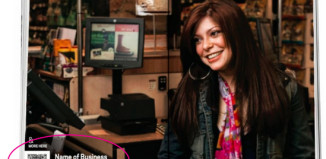“There have been times when Todd and I have said, ‘If we hadn’t met each other, we would not be alive,’ ” said Michael Raiford, who met his partner at a bar in South Florida in 1981, just as the first nervous whisperings about a then-unknown and unnamed infection were winding their way through gay enclaves across America.
Since those early days, when gay men in New York and Los Angeles were being stricken with outbreaks of pneumocystis carinii pneumonia and Kaposi’s sarcoma, and activists such as Larry Kramer were marshaling friends and colleagues to form groups like Gay Men’s Health Crisis, the epidemic has taken the lives of more than 580,000 people across the country through 2007–morphing into a global pandemic and, despite amazing strides in sex education and prevention programs, an estimated 56,300 Americans are still newly infected with HIV each year. According to the 2009 Texas HIV Surveillance Report, Travis County has the third-highest rate of persons living with HIV in the state, with 394.5 people per 100,000 people (behind only Dallas and Harris counties).
Raiford, a set designer and longtime city resident, came out in Fort Lauderdale in the late 1970s and was entering the dating world in an environment that, looking back, now terrifies him. “I remember shuddering a few years later when I recalled two specific times that guys I was dating said something to the effect of, ‘there’s something wrong with me, but the doctors can’t figure out what it is,’” Raiford said, adding that he believed those were early cases of AIDS, not yet diagnosed. “I came to realize how lucky I was to have entered a relationship in 1981 that took me out of the dating scene at a time when AIDS was spreading through South Florida.”
Every nine and a half minutes, someone is infected with HIV in the U.S. Tremendous progress in the area of treatment has meant that thousands of people who are HIV positive, and have access to medication and can afford it, have been able to live much longer, fully productive lives. Even so, although they account for a much smaller portion of the population, gay and bisexual men continue to bear the brunt of the epidemic’s wrath in America, accounting for an estimated 53 percent of new infections here. Despite years of messaging around safe sex and the necessity of using condoms, infection rates have remained stubbornly consistent. Some have theorized that because the sense of urgency is gone, seeing your friends and colleagues get sick and die, apathy has set in.
In cities like San Francisco in the 1980s, which saw a whole generation of artists, dancers, writers and musicians succumb to the disease, that was not the case. Shannon Batson spent her formative years in the Bay Area, attend- ing school, writing for an art magazine and working at the Oakland Museum–and she was also on the vanguard of a growing number of lesbians in urban areas who were banding togethertotakecareoftheirgayfriends,brothersandcolleagues during what she called a “time of crisis.”
“I probably lost every single gay male friend I had,” Batson, who was waiting tables at the time, said. “It became a very sad time.”
Nevertheless, Batson and her cohort, like countless groups of lesbians at that time, mobilized to take care of the men who were getting sick all around them. “We just made sure that people were always okay, bring food over and check- ing in. That was really pretty incredible, actually, when I think about all the help that people gave each other at that time.”
AIDS has always cut both ways–politically, socially and culturally–for the LGBT community. Never before had something so galvanized a generation while simultaneously laying waste to its best and brightest minds. The epidemic led to the creation of organizations such as ACT UP and Gay Men’s Health Crisis in New York City. It forced the first President Bush (with much activist prodding) to intervene on behalf of patients and mandate fast-track approval from the Food and Drug Administration for new medications. And it prompted a creative outpouring that continues to this day, with Larry Kramer’s 1985 play The Normal Heart (which finally had a run on Broadway this year), the groundbreaking 1989 film chroni- cling the early years of AIDS, Longtime Companion and the President Bill Clinton announces the Presidential Advisory Council on HIV/AIDS vibrant, graffiti-style paintings of artist/social activist Keith Haring (who died of AIDS-related complications in 1990).
Gary Cooper was living in St. Louis with his partner, Richard Hartgrove, not long after his HIV-positive diagnosis in the mid-1980s. Even though he was personally frightened–the couple saw countless friends die–Cooper put on a brave face and even acted as a facilitator for a sero-positive HIV support group for the St. Louis Effort for AIDS, an all-volunteer organization he was involved with in those years.
“When we came back to Austin, most of the guys we knew from here in the mid-’80s were dead,” Cooper said. “You hear references to this all the time, but it was the most creative people who were out there, really wonderful and smart people, who were the first to go.”
Death, and all of its rituals, was permanently woven into the community’s DNA at this time–wrapped up and intertwined with America’s conservative views on sex and sexuality, and against a backdrop of the ongoing marginalization of the queer community. Celebrities of all backgrounds put a public face to what had been largely private grief: actor Rock Hudson, teenager and activist Ryan White, The Real World’s Pedro Zamora, Studio 54 owner Steven Rubell and tennis legend Arthur Ashe.
“We feel like we know what it would be like to be elderly and see all of your friends die,” Raiford said. “I think about that to this day. It was not only frustrating to have so many people die, but to also see the effects on the families.”
Still, all that fear of death—utter terror is more like it— prompted the type of civic engagement and bonding together as gay men and lesbians that would set the tone for the coming decades of activism in a wide range of areas, truly inspiring and galvanizing a generation of people. In St. Louis, the group that Cooper was working with transitioned from an all-volunteer organization to a professional social services agency in response to how rapidly HIV was spreading.
“We realized that we’d created, out of nothing, a structure that we could translate into gay community building,” Cooper said. “It didn’t have to be all about death. We could take this organizational behavior that we were learning and put it to very positive use to move forward with our gay civil rights.”
In November of 1985, longtime San Francisco gay rights activist Cleve Jones wanted a way to remember the many ordinary people, friends and colleagues who’d been lost to the disease. The response from people in other cities was imme- diate and fierce. Known as the AIDS Memorial Quilt, it began with just over 1,900 three-by-six foot panels and grew into a worldwide memorial project with more than 44,000 panels.
Everyone’s struggle was unique. For many, it was the ultimate indignity: dying alone without ever having been honest with their families about their sexuality. “Families would shun the partners, visitation at hospitals was an issue as well,” Raiford said. “The AIDS epidemic pushed the rules of hospitals in terms of visitation.”
When David Smith was diagnosed with HIV in 1990, he was 24 years old and working for the Northern Virginia AIDS Ministry, where he set up a system to take people with AIDS to their appointments. Years later, after relocating to Austin in 1994 and working as the executive director for The Care Communities, Smith landed in his current role leading the massive, enthusiastic team of volunteers behind the Hill Country Ride for AIDS—which has grown into the second-most successful AIDS ride in the U.S. (behind only the AIDS/Life- Cycle Ride from San Francisco to Los Angeles).
“This community should be so proud that in Texas we have grown the ride to this level,” he said. “I hear every day about how money from the ride has helped someone get the care they need. We need it to continue to grow.”
As the epidemic has shifted, becoming for some people a disease that can be managed with a regimen of expensive drug treatments (costing up to $30,000 a year), the country’s economic and political landscape has also changed. As more and more people locally and across the country have access to life-prolonging treatments, the need for increased funding also goes up, but state and local leaders have been unable or un- willing to increase the funds during this time of economic malaise.
Locally, the Texas HIV Medication program, which provides medication to people living at or below 200 percent of the federal poverty line, was on the chopping block earlier this year as the legislature looked to close a budget gap of $27 billion. The program currently saves the lives of more than 14,000 low-income individuals and its ranks are only growing.
It goes against basic logic to defund these programs, however. Medication is the only proven prevention that works to lower infection rates. In a perfect world, all men would use condoms at all times. Medication dramatically lowers the viral load of people who are positive, thereby lessening the chances that they will transmit HIV to their sexual partners. Although there have been years of messages about getting tested, one out of five people living with HIV is unaware of their status, therefore unknowingly transmitting the virus to other people.
In the epidemic’s early years, because many doctors would not treat people with HIV, entire parallel health systems were set up for people living with the disease. As that prejudice has waned, those systems aren’t as useful and are being inte- grated into the mainstream health care world.
HIV will continue to challenge all of us on many levels— political, social, economic and personal. It’s up to the entire community to decide how to move forward with compassion and intelligence. It’s also worth looking at how the disease has evolved and where it’s going. “I think we are all facing the fact that AIDS is not just missing in the headlines; it’s also just not something people think about as much,” Smith added.
The epidemic is becoming urbanized. Nationally, it has always been a disease with a disproportionate impact on the gay male community, and it still is. However, the racial makeup has shifted dramatically in 30 years. Although black people represent 12 percent of the U.S. population, they account for 46 percent of people living with HIV and 45 percent of new infections. Amongst black MSM (men who have sex with men, in the official parlance), the rates of infection are approaching Sub-Saharan Africa levels.
These infection rates should be a clarion call for the LGBT community–it’s long past time to ring the alarm once again. For a new generation, raised with sex education in school and seeing newer drug cocktails prolong lives, the urgency must be re-created. It’s been done before and it can be done again. True compassion is donating your time or money to a local organization such as Project Transitions or AIDS Services of Austin. Talking openly about this issue with your friends, no matter how uncomfortable it might be, is vital.
“We are all so thankful to be here, but I hope we don’t lose that there are still just as many people who need our care as before,” said Smith. “Rather than meeting someone at the emergency room, you are more likely to meet them at the food bank or help cover their health insurance payments. Again, we are all part of the same family, AIDS affects all of us, and in the words of my favorite theologian: ‘We’ve got to carry each other.’ What a privilege and joy to do so.”


































